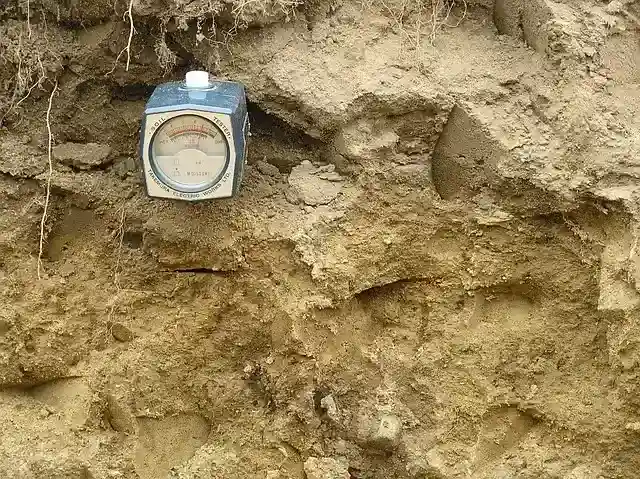- What is meant by soil acidity?
- Symptoms of soil acidity
- Causes of soil acidity
- Effect of soil acidity on farming
- Treatments of soil acidity
- Conclusion
Table of Contents
ToggleWhat is meant by soil acidity?
Soil pH level is the main factor that determines soil acidity and alkalinity. Soil acidity refers to the level of acidity or alkalinity (pH) of soil. There are various pH levels measured from 7 to 14. Soil having below 7 Ph is acidic, above 7 is alkaline, and with a Ph level of 7, it is considered neutral.
The optimum level of pH for plants is 5.5 to 7.0 but some plants adapt to live at Ph values outside this range. Additionally, nutrient availability in the soil is essential to maintain accurate levels of soil suitable for growing plants.
Acidity in the soil can be caused by a variety of factors, including the type of parent material, organic matter decomposition, and the weathering of minerals in the soil. Excessive use of certain fertilizers and other agricultural practices, such as heavy irrigation and crop rotation, can also contribute to soil acidity.
Soil acidity affects the availability of essential nutrients to plants, as some nutrients are more readily available at certain pH levels. For example, phosphorus, iron, and manganese are more available in acidic soils, while calcium and magnesium are more available in alkaline soils. If the soil is too acidic, it can also cause toxic levels of aluminium and manganese to accumulate in the soil, which can be harmful to plant growth.
Symptoms of soil acidity
Symptoms of soil acidity vary depending on the severity and duration of the condition, but some common signs include:
- Stunted plant growth
- Yellowing leaves
- Reduced crop yield.
- Increased weed growth
- Soil erosion is due to less water-holding capacity.
- Acidic soil can also lead to the leaching of aluminium and other toxic metals, which can be harmful to plant growth and development.
If you suspect that your soil may be too acidic, it is recommended that you perform a soil test to determine the pH level and the specific nutrients that may be lacking.
Soil Acidity Causes
Soil acidity can be caused by a variety of factors, including:
Natural processes: Soil acidity can occur naturally due to factors such as rainfall, which can leach basic minerals from the soil and cause an increase in acidity. Additionally, the type of parent material can also affect soil acidity.
Organic matter decomposition: As organic matter decomposes, it releases organic acids, such as humic and fulvic acid, which can contribute to soil acidity.
Agricultural practices: Certain agricultural practices, such as the use of nitrogen-based fertilizers, can contribute to soil acidity. When these fertilizers are applied in excess, they can cause an increase in soil acidity.
Acid deposition: Acid deposition, also known as acid rain or acid snow, can increase soil acidity by adding sulfuric and nitric acid to the soil.
Industrial pollution: Industrial activities, such as mining and manufacturing, can contribute to soil acidity by releasing acidic gases and chemicals into the atmosphere.
Climate change: Climate change can also affect soil acidity by altering precipitation patterns and temperatures, which can influence the leaching of basic minerals from the soil.
Effect of soil acidity on farming
Soil acidity can have significant effects on farming, including:
Reduced crop yield: Acidic soil can limit the availability of essential nutrients, such as nitrogen, phosphorus, and potassium, which can lead to reduced crop yield and poor plant growth.
Reduced soil fertility: Soil acidity can reduce soil fertility by decreasing the availability of nutrients and inhibiting the activity of beneficial soil microorganisms.
Increased weed growth: Acidic soil can favor the growth of certain weed species, which can compete with crops for nutrients and resources.
Soil erosion: Acidic soil can have a reduced capacity to hold water and nutrients, which can result in increased soil erosion and loss of topsoil.
Increased susceptibility to pests and diseases: Acidic soil can weaken plants, making them more susceptible to pests and diseases.
The increased cost of inputs: Farmers may need to apply more fertilizer or other inputs to compensate for the reduced availability of nutrients in acidic soil, which can increase production costs.
Conclusion
It is important to manage soil acidity to maintain healthy and productive soils, which can be achieved through practices such as liming, crop rotation, and balanced fertilization. To mitigate the effects of soil acidity on farming, it is important to manage soil pH through practices such as liming, which involves the application of calcium and magnesium-rich materials to increase soil ph.
Additionally, practices such as crop rotation, cover cropping, and organic farming can help maintain soil fertility and reduce the negative effects of soil acidity on farming.

